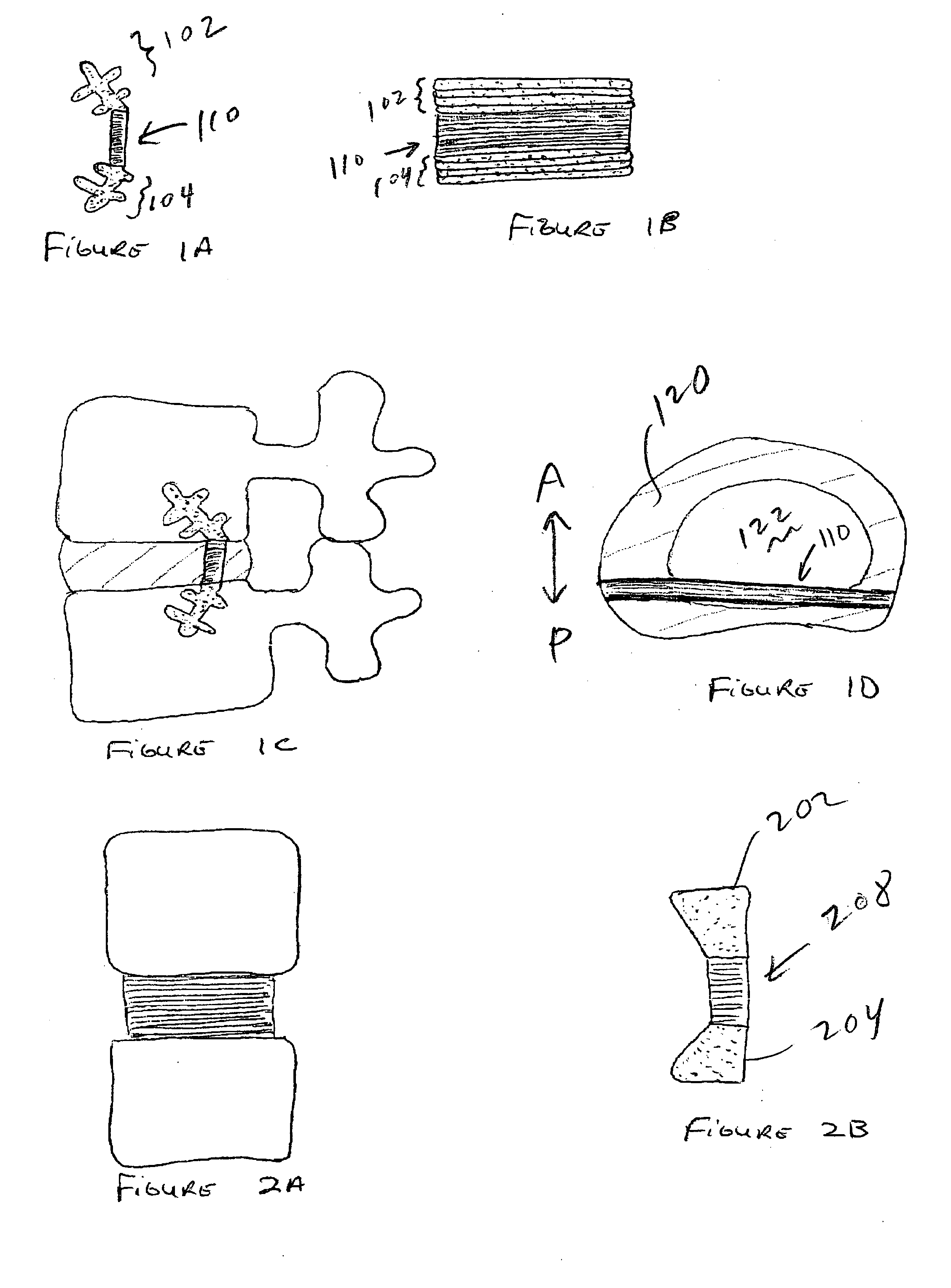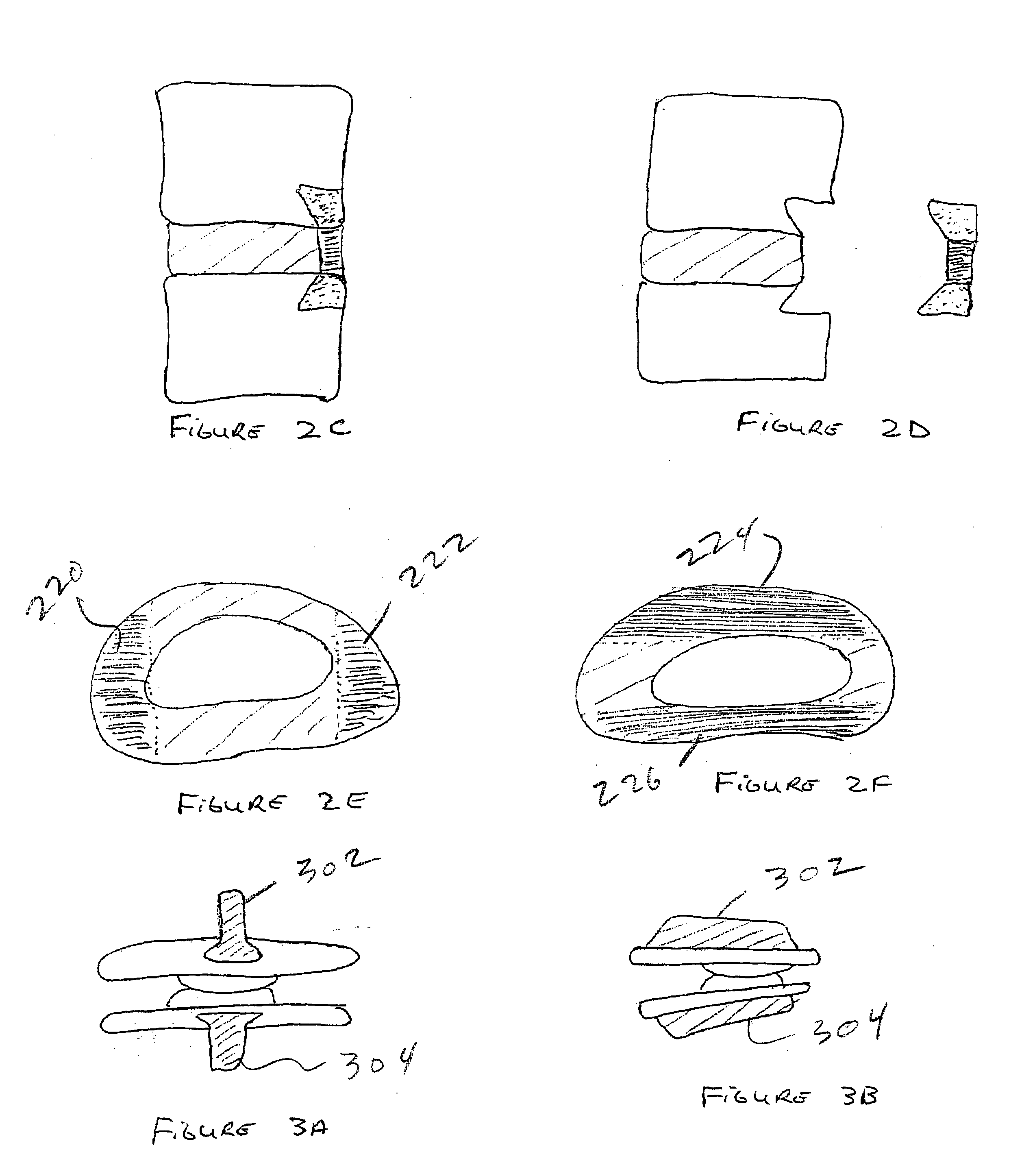Spinal implants, including devices that reduce pressure on the annulus fibrosis
a technology of annulus fibrosis and implants, applied in the field of spine implants, can solve problems such as back or leg pain, and achieve the effect of preventing recurrent herniation and facilitating reconstruction
- Summary
- Abstract
- Description
- Claims
- Application Information
AI Technical Summary
Benefits of technology
Problems solved by technology
Method used
Image
Examples
Embodiment Construction
[0230] The methods and apparatus taught herein prevent excessive pressure on the Annulus Fibrosis (AF). In the preferred embodiment, a nucleus replacement (NR) is inserted from a lateral aspect of the lumbar spine at L4 / L5 or above. A transpsoas technique is used in the preferred lateral approach to the lumbar spine. Identification of nerves within the psoas muscle allows the nerves to be protected and retracted anterior and posterior as necessary. A nerve stimulator may be used to help identify the nerves. Alternatively, the psoas muscle could be split with an endoscope that delivers or records electrical impulses. The myotomes of the extremities could be monitored to detect the electrical impulses. The novel NR could also be used from an anterior approach to the cervical spine. The dam or barrier embodiments of the invention may be used in conjunction with natural as well as artificial discs.
[0231]FIG. 1A is a lateral view of a “curtain” annulus augmentation device similar to the...
PUM
| Property | Measurement | Unit |
|---|---|---|
| Pressure | aaaaa | aaaaa |
| Volume | aaaaa | aaaaa |
| Flexibility | aaaaa | aaaaa |
Abstract
Description
Claims
Application Information
 Login to View More
Login to View More - R&D
- Intellectual Property
- Life Sciences
- Materials
- Tech Scout
- Unparalleled Data Quality
- Higher Quality Content
- 60% Fewer Hallucinations
Browse by: Latest US Patents, China's latest patents, Technical Efficacy Thesaurus, Application Domain, Technology Topic, Popular Technical Reports.
© 2025 PatSnap. All rights reserved.Legal|Privacy policy|Modern Slavery Act Transparency Statement|Sitemap|About US| Contact US: help@patsnap.com



